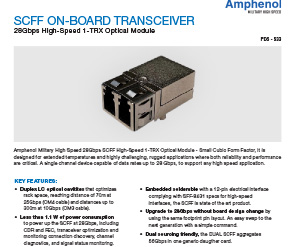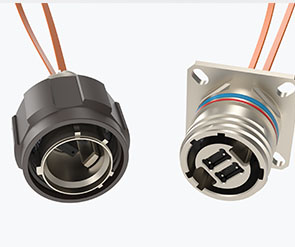SCFF
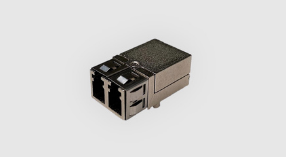
Contact:
Description:
The SCFF (Small Cubic Form Factor) is a ruggedized 1-channel duplex multi-mode optical transceiver operating at 850nm wavelength. It utilizes a 12-pin electrical interface in SMT (Surface Mount Technology) configuration, conforming to SFF-8431 specification for high-speed interfaces. This high-speed fiber optic transceiver is capable of data rates from 1.25Gbps up to 28.05Gbps and is designed to withstand harsh environments:
- Operating case temperature range from -40°F (-40°C) to 185°F (85°C).
- Shock: 500g for 1ms per MIL STD-883 Method 2002.4.
- Vibration: 20g in the 20-2000Hz frequency range per MIL STD-883 Method 2007.3.
Originally introduced in 2009 to support 10Gbps speeds, a new ruggedized version of the SCFF was developed by AAOP in 2019 to meet the demand for higher data rates (25Gbps) and applications in harsh environments. This rugged SCFF employs a "chip-on-board" design, making use of cutting-edge 25Gbps chipsets from the data communication industry, including VCSEL drivers, TIA (Transimpedance Amplifier), VCSEL (Vertical-Cavity Surface-Emitting Laser), and PIN Diodes.
The rugged SCFF can be securely mounted on a PCB using two screws and soldered onto the rear connector. Its height has been optimized to be less than 10mm above the PCB to ensure compatibility with modern electronic casings and embedded computing applications.
Features & Benefits:
- Small Cubic Form Factor (SCFF) -> half the area of an SFP+
- Data rate transparent from 1.25Gbps to 28.05Gbps*
- Duplex LC optical interface (ARINC801 adapter option)
- SFF-8472 compliant two-wire control and diagnostic interface (i²c)
- Tx Power monitoring
- Temperature monitoring
- Input voltage (module)
- Rx Power monitoring (RSSI)
- Bias current monitoring
- Programmable input equalization
- Programmable output amplitude and de-emphasis
- Clock and Data Recovery functionality*
- Low power consumption (<0.45W at 10Gbps [0°; 185 °F (85 °C)] Tx+Rx)
- High link-budget (14dB nominal at 10 Gbps)
* for 25Gbps version only
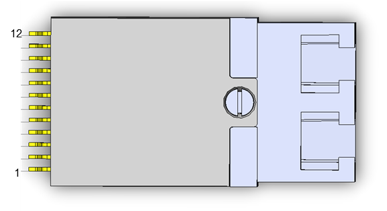

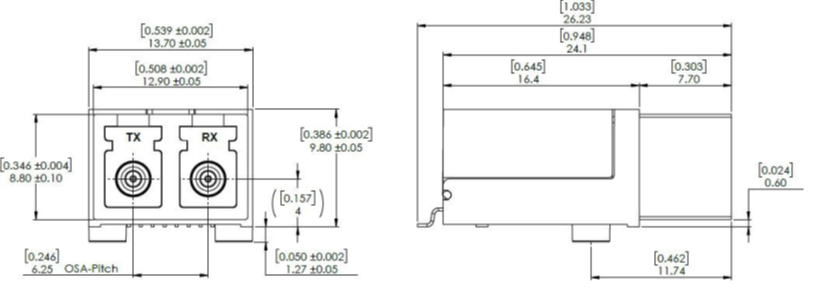
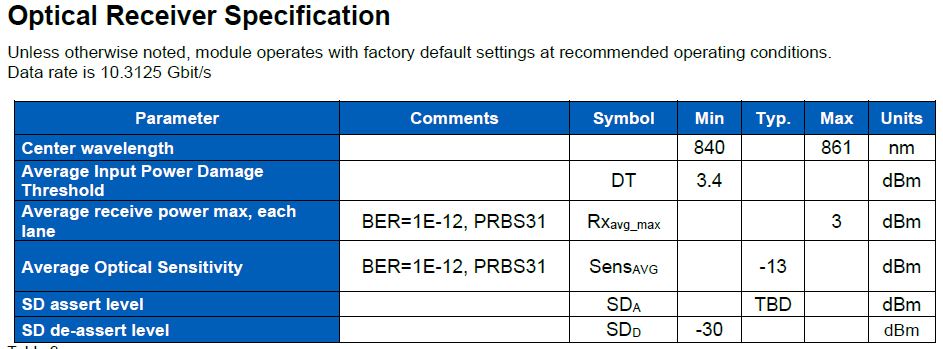
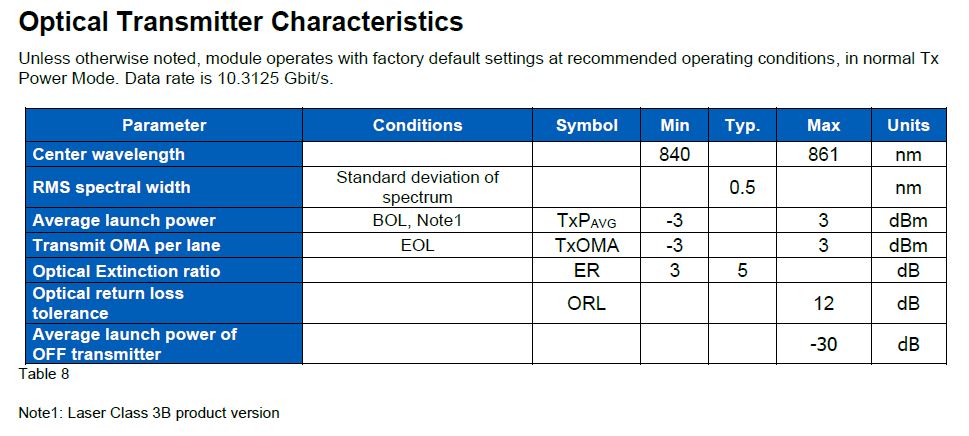
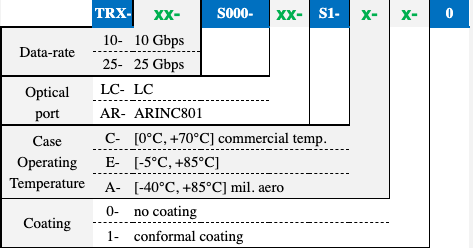
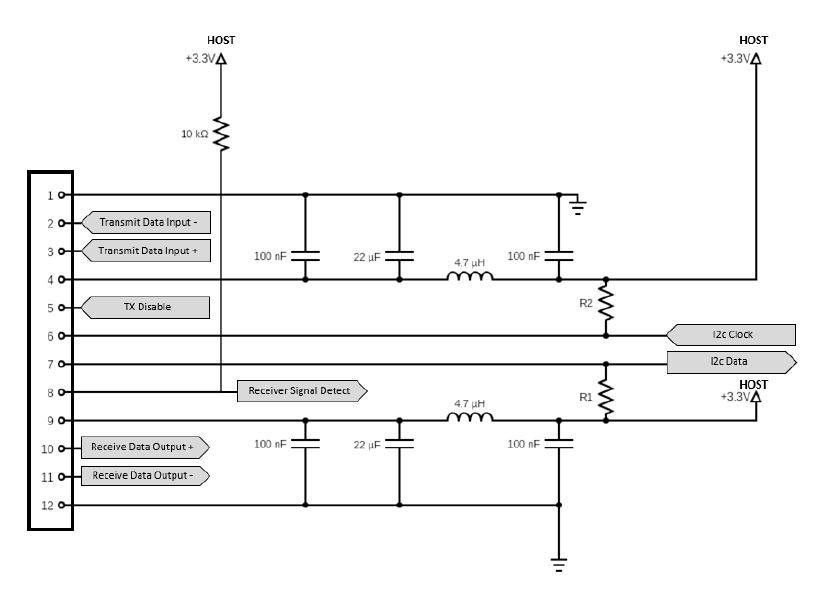
SCFF 25G block diagram

